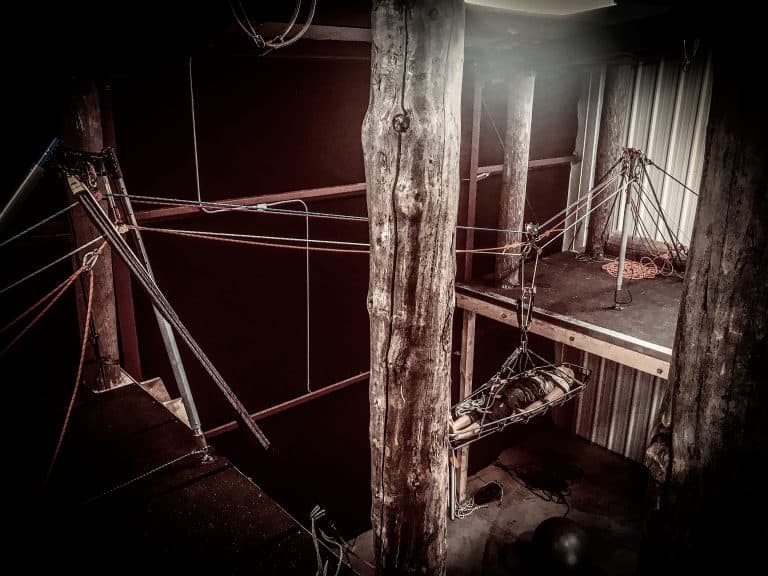The Less Than 10 Percent Solution Highlines
The Less Than 10 Percent Solution Highlines are one of the most complex and intimidating rigging systems in technical rescue. Whether it’s spanning vast gaps or ensuring the safe transport of a load, building a functional highline requires understanding multiple components, systems, and techniques. For many, like the author of this journey, the thought of setting up a highline for the first time can feel overwhelming. However, with clear objectives, the right tools, and a methodical approach, the process becomes an invaluable learning experience.
This article recounts the journey of building a highline system for the first time, focusing on overcoming fears, applying foundational rigging knowledge, and understanding the nuances of highline systems like the English Reeve.
Why Highlines Matter
Highlines serve a critical purpose in rescue operations: moving loads across challenging terrains where conventional methods are impractical. But highlines aren’t just about spanning distances—they are about control, safety, and efficiency. This distinction often raises the question: Highline or offset? While offsets can be simpler, highlines provide unparalleled versatility when properly executed.
The Learning Experience
For this first attempt, the highline setup was designed using an English Reeve system, incorporating foundational rigging tools and techniques:
- The Trackline: Serving as the span across the gap.
- The Deflection: Managing midspan angles to control forces.
- The Tensioning System: Keeping the trackline taut for stability and efficiency.
- The Reeving System: Moving the load across the gap safely.
- The Control System: Facilitating precise movement along the span.
- The Litter Package: Including the reeving system for patient transport.
These components came together through careful planning and a deliberate focus on problem-solving.
The Setup
The equipment used reflected a balance of versatility and reliability:
- Artificial High Directionals (AHDs):
- A Rock Exotica Arizona Vortex configured as an SA frame on the near side and a monopod on the far side.
- Mechanical Advantage Systems:
- A Petzl Jag System for tensioning the tracklines.
- Progress capture devices on all mechanical advantage (MA) systems.
- Control Devices:
- A Petzl Rig for lowering and tension release on the tracklines.
- Petzl RollClip pulleys for smooth rope management.
- Safety Systems:
- A Petzl ASAP for reeve safety and backup.
- Omni Block pulleys and Petzl Axis 11mm rope for reliable load handling.
Key Challenges and Lessons Learned
- Understanding Deflection Angles
Deflection angles directly impact the forces on the trackline and anchors. Achieving the proper balance ensures both safety and efficiency. - Tensioning the Tracklines
Applying the Rule of 12 (a formula for post-tensioning dual tracklines) helped ensure the right amount of tension without overloading the system. - Reeving System Efficiency
Moving the load across the span required precision and the ability to mitigate friction and other forces acting on the system. - Safety First
Using the Petzl ASAP as a reeving line backup replaced traditional prusiks, eliminating the need for constant manual adjustments. This innovation reduced workload and improved overall safety.
The Outcome
Despite initial intimidation, the highline setup was a success. The system transported the load (Randy) safely and smoothly across the gap. The AHDs provided reliable anchor points, and the deflection angles were well managed. While some transitional headaches arose, they were resolved with patience and methodical adjustments.
The takeaway? Highlines are not just about technical skills—they are about perseverance, creativity, and the willingness to learn through doing.
Explore Highline Systems with Rigging Lab Academy
If you’re ready to take on highline systems or improve your existing skills, Rigging Lab Academy offers comprehensive courses and resources to guide you. From the basics of AHDs to advanced techniques in highline rigging, we’ve got you covered.
- Learn the fundamentals of highline systems in Rigging Lab Academy: Highline Basics.
- Dive deeper into Artificial High Directionals with Rigging Lab Academy: AHD Essentials.
- Explore advanced techniques in Rigging Lab Academy: Highline Advanced Systems.
Conclusion
Building a highline system for the first time is a journey of discovery, requiring both technical expertise and the courage to overcome doubts. By focusing on the essentials, seeking guidance when needed, and committing to learning, even the most complex systems become manageable. For those looking to refine their skills or tackle their first highline, Rigging Lab Academy provides the tools and knowledge to succeed.
Peace on your Days
Lance













9 thoughts on “The Less Than 10 Percent Solution Highlines”
Good info. Lucky me I reach on your website by accident, I bookmarked it.
851527 605110Sweet internet site , super pattern , extremely clean and utilize friendly . 340067
Saved as a favorite, I really like your blog!
Great post. I am facing a couple of these problems.
41002 68492I believe this website contains some very amazing information for every person : D. 945148
Very informative blog article.Much thanks again. Really Cool.
Really enjoyed this post.Really thank you! Keep writing. makaberzux
657646 416585It can be difficult to write about this subject. I think you did a terrific job though! Thanks for this! 724890
195730 250972Wonderful weblog layout here. Was it hard creating a good seeking site like this? 936696
Comments are closed.